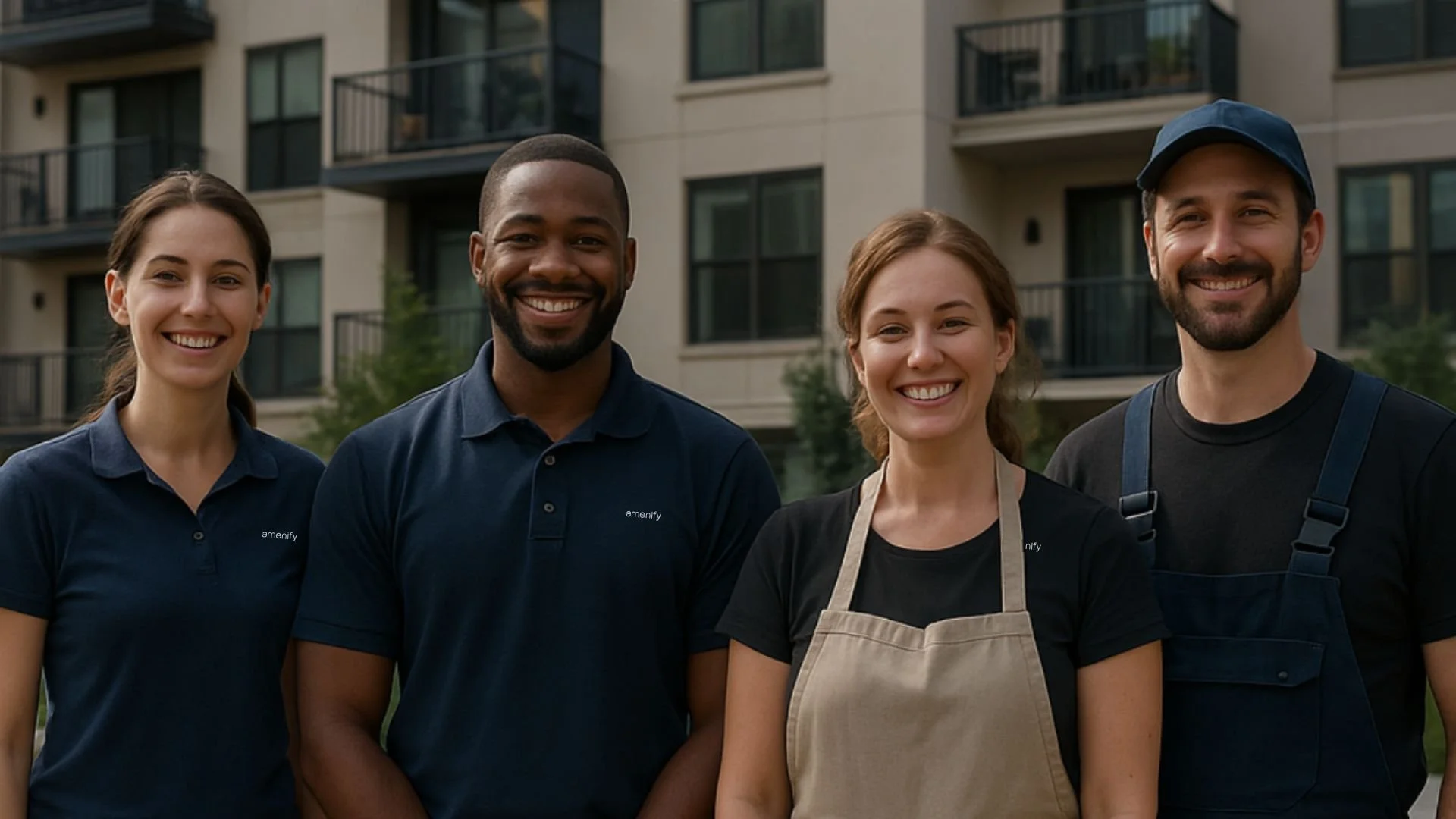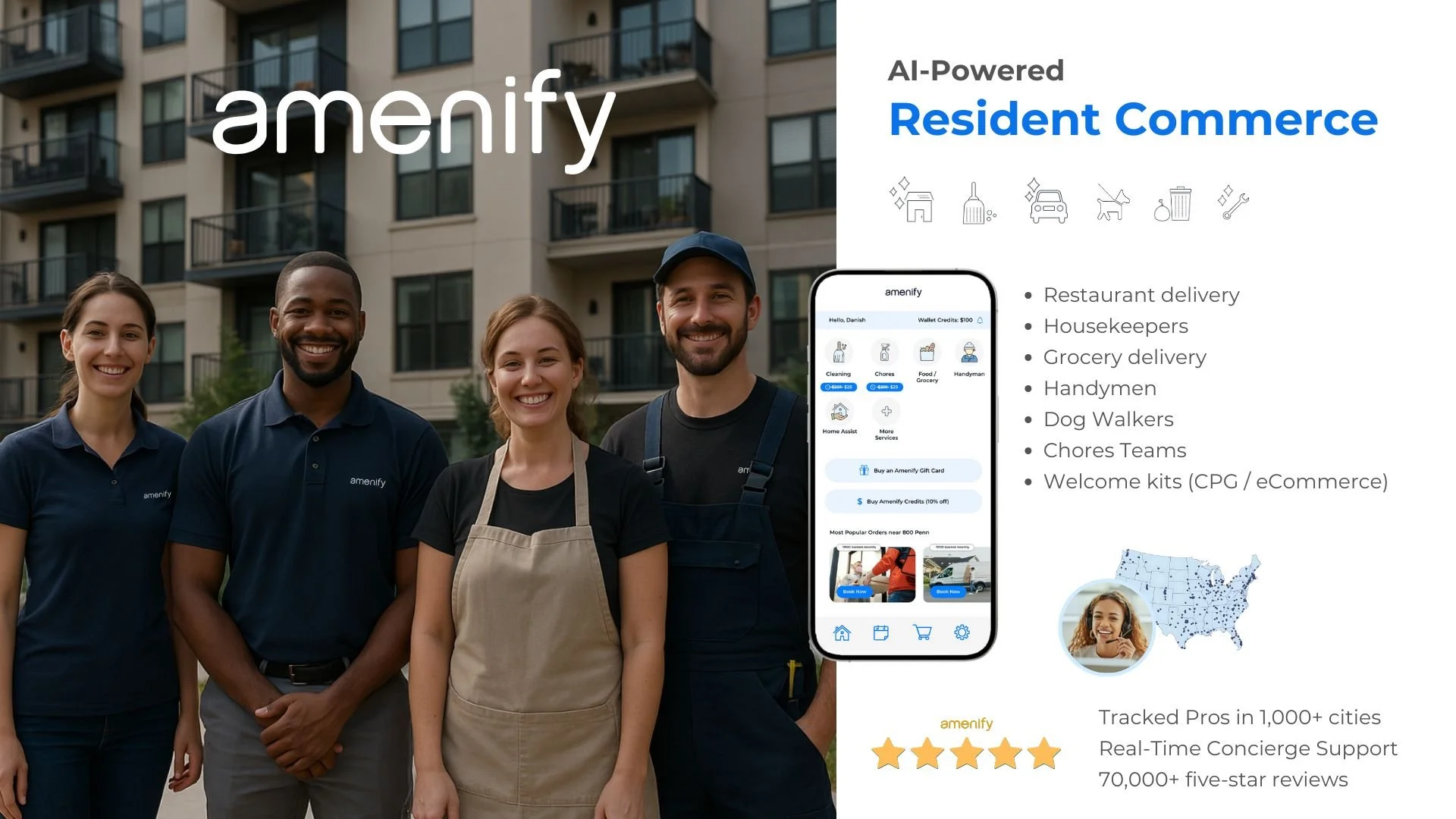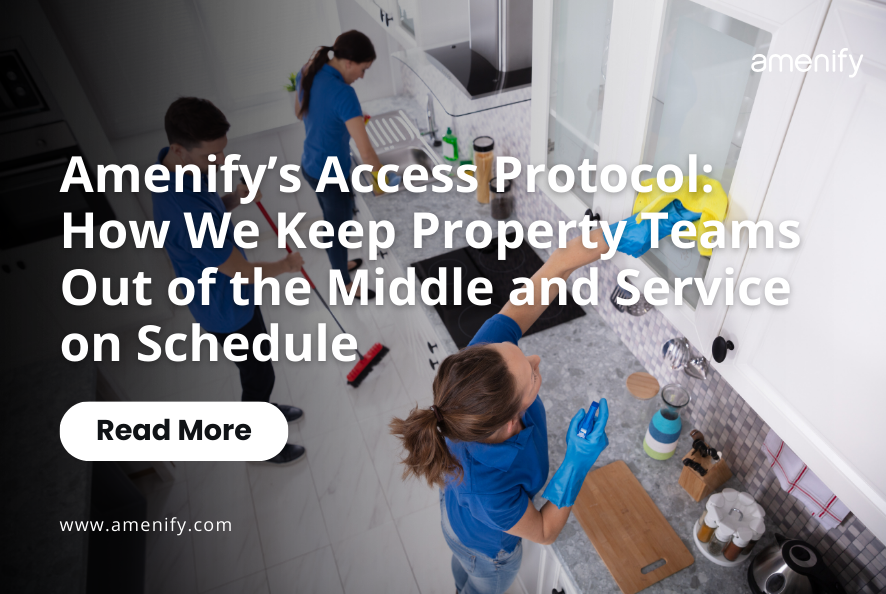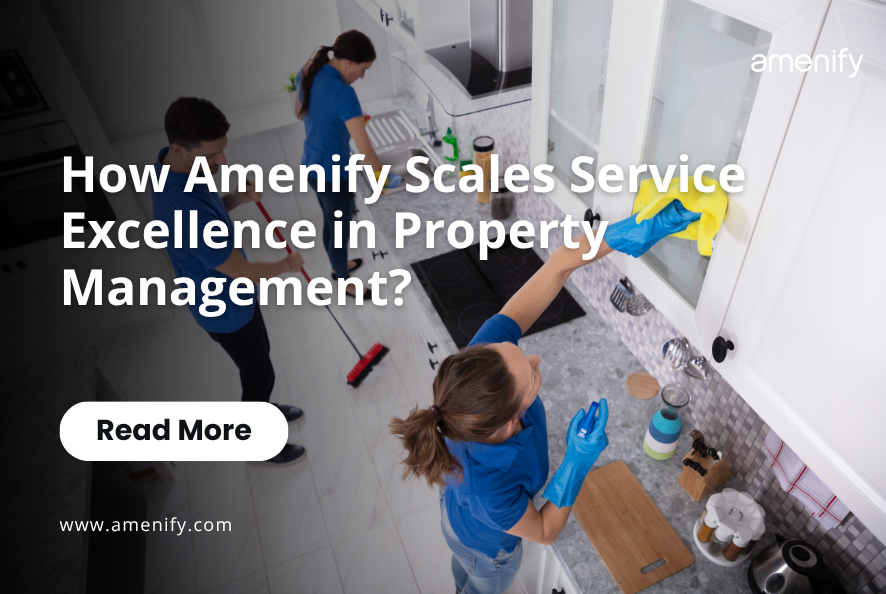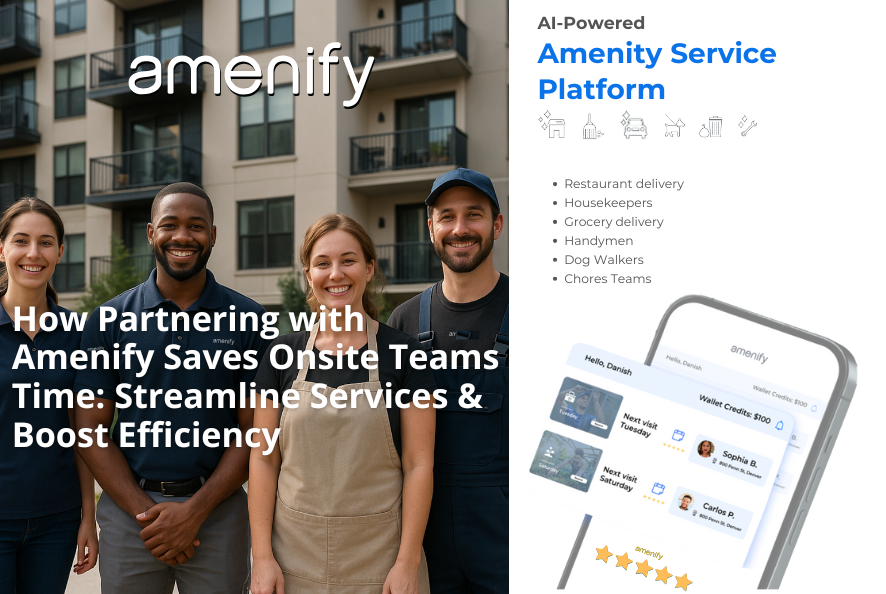How Amenify Scales Service Excellence in Property Management?
Raising the Bar: Amenify's Strategic Playbook for Service Provider Quality Control
In a property management operation, there’s no "nice to have" when it comes to service provider quality; it’s a hit or miss on your resident satisfaction, NOI, and asset value. Amenify understands this. Since 2017, we’ve been building a vendor quality control engine that checks more than boxes and incorporates operations and resident expectations. Here’s how.
Sourcing Only the Best in Service
You cannot construct a premium resident experience from the same pool as everyone else. Amenify starts the process by scraping and analyzing data from the top 20-30 rated service providers in each market.
This is not simply a star rating exercise; they are evaluating consistency, scale, experience, and, most importantly, the ability of the service provider to retain customers over time.
Amenify looks at sites like Yelp, Thumbtack, and Google Reviews, but also your local employment and internal job boards. The focus is not only on good service; it's about good operation as a business.
This sourcing methodology helps ensure that only the local service talent in the top decile gets consideration. For property operators, this means fewer complaints, faster resolution, and predictable outcomes.
Quality Starts With Intent: The Vetting Process
Once a provider is found, they can guarantee revenue. That isn’t charity; it’s leverage. It focuses the attention of the appropriate candidates, and it gets them in the door quickly.
Then there is an extensive application process that includes background checks, hiring practices, growth planning, and customer success practices.
The vetting process is exhaustive, making sure a provider is not just capable, but committed. It eliminates hobbyists and part-timers, and it focuses on delivering commercial-level service.
Operators can be certain that when a provider comes on-site, they have already passed multiple gates.
Evaluating Fit Beyond the Resume
Amenify then screens each provider with a qualitative interview with their Marketplace Team. Here comes the subjectivity, response times, communication style, and cultural fit.
They are looking for businesses that can flex and manage demand without losing quality at scale. It's not good enough to be good enough managing 10 jobs in a week; you have to be good at managing 100 jobs with systems in place to manage field staff & communication, and escalation if things go wrong.
Building a Framework for Accountability
Amenify involves layers of enterprise-grade insurance (general liability, auto, crime) and compliance software tools. Each provider is folded into a conforming system of training on access to community space, uniforms, expectations, KPIs, and communications tools. This is not onboarding. It's indoctrination into a culture of performance.
Compliance also has tech protocols. Each provider is given tools for checklists, scheduling, tracking performance, and resident feedback. For owners and asset managers, this translates into mitigating liability, documenting accountability, and a cache of performance metrics from which there will be a broader scope of operational decisions.
Real-Time Ops Monitoring
Most platforms do post-mortem QA. Amenify uses automation and machine learning to catch issues before they become problems. Think schedule confirmations, ETA geolocation tracking, and backup dispatch. The result? A 92%+ job completion rate. That number matters because when your residents expect on-time service as part of their living experience.
This real-time infrastructure means that even when things go sideways, a provider is stuck in traffic, or a delayed schedule, Amenify has backup mechanisms in place. That 92% completion rate isn’t a vanity metric. It’s what drives lease renewals, positive reviews, and fewer manager escalations.
Embedding Quality into Everyday Operations
In the case of an occasional mishap, that's right, it sometimes happens, Amenify established a process for refunds and recovery. If a provider receives less than 5 out of 5 stars, Amenify looks at the review alongside information from the resident, provider, and the Amenify system data.
Providers are also rated monthly based on their fulfillment performance, responsiveness, and reviews. There are no perfect partners, but there are partners who get better and better.
Those are the ones Amenify keeps. This ongoing QA loop is what allows providers to maintain high standards in service. A provider does not just get a license to perform service - they live in a constant state of being assessed, through the continuous feedback loops that they are held accountable for with regard to the actual license.
This means property leaders can rest assured knowing that quality is not an accident—it is the product of design.
The Takeaway for Operators
If you’re serious about scaling multifamily operations while maintaining or improving resident satisfaction, your service vendor strategy cannot be reactive. Amenify's model proves that quality control is a function of upstream discipline, tech integration, and constant feedback loops. For the executives still hoping that a few extra background checks or a bigger vendor list will do the trick, it won’t.
Service quality is not a department—it’s an ecosystem. Amenify's playbook demonstrates that when you integrate technology, vet for business maturity, and build a culture of continual improvement, quality becomes scalable. For asset managers, REITs, and large operators, this means one less operational fire—and a whole lot more value protection.
Operational excellence is intentional. So is quality. Amenify’s playbook is one worth studying.



